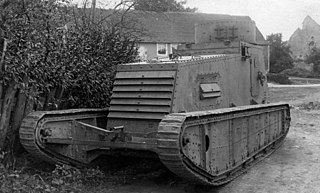 W
WGrosstraktor was the codename given to six prototype medium tanks built by Rheinmetall-Borsig, Krupp and Daimler, for the Weimar Republic, in violation of the Treaty of Versailles. Constructed in secret, they were tested by Reichswehr units at the Kama tank school in the Soviet Union. They were used for training and retired as monuments after the Nazi party came to power.
 W
WThe Leichttraktor (Vs.Kfz.31) was a German experimental tank designed during the Interwar Period.
 W
WThe Leichter Kampfwagen or "LK I" was a German light tank prototype of the First World War. Designed to be a cheap light tank as opposed to the expensive heavies coming into service at the time, the tank only reached the prototype stage before the end of the war.
 W
WThe Leichter Kampfwagen II or LK II was a German light tank prototype of World War I. A development of the LK I, it incorporated a fixed rear superstructure and was armed with a 37mm Krupp or 57mm Maxim-Nordenfelt gun. Its armor was 8 to 14 mm thick, which increased total weight to 8.75 tons. Power was provided by a Daimler-Benz Model 1910 4-cylinder 55-60 hp gasoline engine, giving a maximum speed of 14 to 18 km/h with range of 65–70 km.
 W
WThe MBT-70 was an American–West German joint project to develop a new main battle tank during the 1960s.
 W
WPanzerkampfwagen VIII Maus ("Mouse") was a German World War II super-heavy tank completed in late 1944. It is the heaviest fully enclosed armoured fighting vehicle ever built. Five were ordered, but only two hulls and one turret were completed, the turret being attached, before the testing grounds were captured by advancing Soviet military forces.
 W
WThe Versuchsträger 1-2 were two German prototype twin gun turretless main battle tanks. Since the early 1970s a number of West German companies have been working on conceptual designs for a successor to the Leopard 1. This project had the name Kampfpanzer 3. The KPz 3 project was temporarily a British-German joint project, until the UK withdrew because they wanted a turreted tank. The Germans had already developed the Leopard 2 and therefore didn't see the need for another conventional tank. One of the companies involved was MaK, developing the VT 1-1 and VT 1-2. The test programme ended proving that a twin-gunned turretless tank could be created with enough technical effort, but had drawbacks in both practical and tactical use.